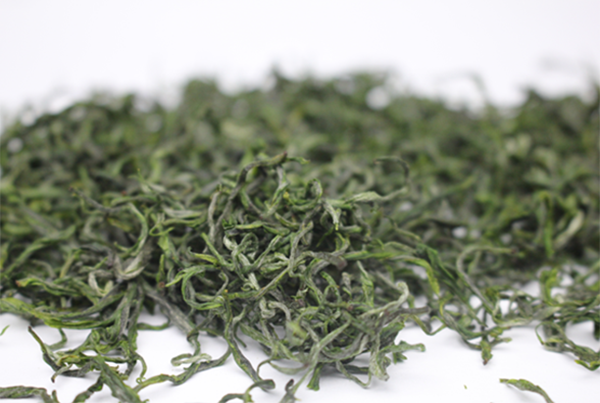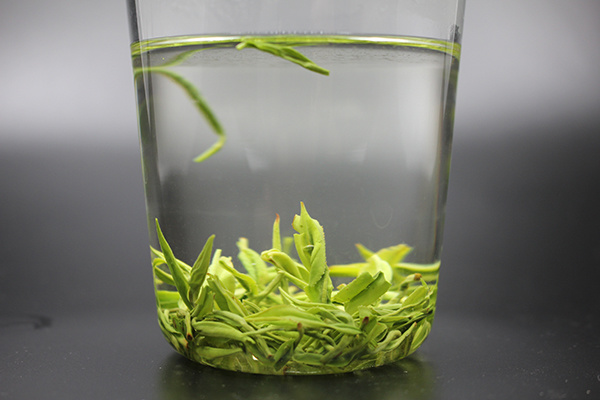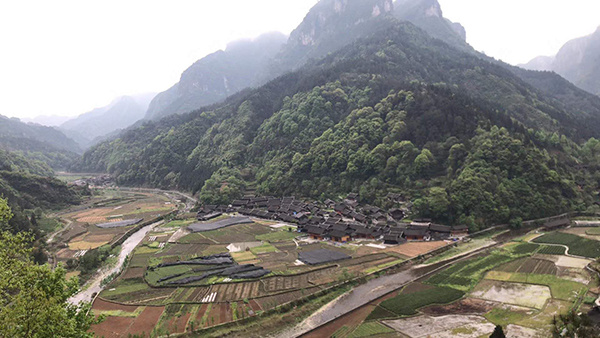NEWS &INFO
BAOJING GOLD TEA
Release time:
2019-11-10 15:43
source:
Baojing Gold Tea is a specialty green tea from Baojing County, Tujia-Miao Autonomous Prefecture of Xiangxi(Western Hunan), a superior green tea containing 7% amino acid, twice the amount from other green teas of the same period. Rich in polyphenols and chlorophyl and with a very impressive taste profile featuring “fragrance, green, briskness, richness”, the tea deserves its name: Gold Tea.

The tea features a wiry uniform, solid, slightly bending, emerald green and downy dry leaf and a bright and clear brew with high sharp and lasting fragrance of cooked chestnut. The taste is brisk and refreshing. The brewed tea should be bright and yellowish green.

It is a kind of ancient, distinctively rare tea variety, native to the Miao People of Hunan, who are the descendants of the legendary King Chiyou, and grown mainly in the area of the Golden Village of Ludong Mountain, Baojing County. So far, there are still more than 400 years of ancient tea trees, and the allusion of “a pound of gold exchanged a pound of tea”.

According to the Records of Emperor Shi-zong Jiajing of 1545 of the Ming Dynasty, the Imperial Supervisor of Hu-Guang Region and Guizhou Province, Lu Jie, made an inspection tour of military defense by way of Luqi Town (located in today Hulu Town, Baojing County), an area known for thick forest mountains. Hundreds of inspectors were sick with the poisonous miasma when they came through the area, and most could no longer move. Seeing the suffering of the Ming officials, an old Miao granny, with the family name of Xiang, picked up leaves from her hundred-year-old tea trees, boiled the leaves and offered them her tea. Miracle happened. The suffering officials were soon recovered from their illness. To express his great appreciation, Lu Jie gave a piece of gold bar to the granny, and he recommended the Miao tea as an imperial tribute. Henceforth, People called the tea the “Baojing Gold Tea.”
Wuling mountain area is one of the two Golden Triangle of green tea in China. Gold Village, the origin of Baojing Gold Tea is located in 300 degrees north latitude, in the center of Wuling mountain area, about 325m in altitude with an annual average temperature of 16.1℃, an annual precipitation of 1400 mm, an annual sunshine of 1270hr and a non-frost period of 288d. The soil in Baojing County is developed from sandstone and shale. It has loose soil and strong penetrability. The pH value is 4.5 to 5.5, and the organic matter content is 2.0% or more. It is rich in phosphorus, iron and magnesium, selenium and other elements. The terrain is mountainous and crisscrossed with rivers and streams.
The tea is harvested before the Tomb-Sweeping Festival in the 3 weeks between late Autumn and early April. The picking standard is one sprout and one leaf. The production procedure is as follows: withering by spreading out-Killing Green-Rolling-Drying
Previous
Next page
Previous
Next page
Related news







